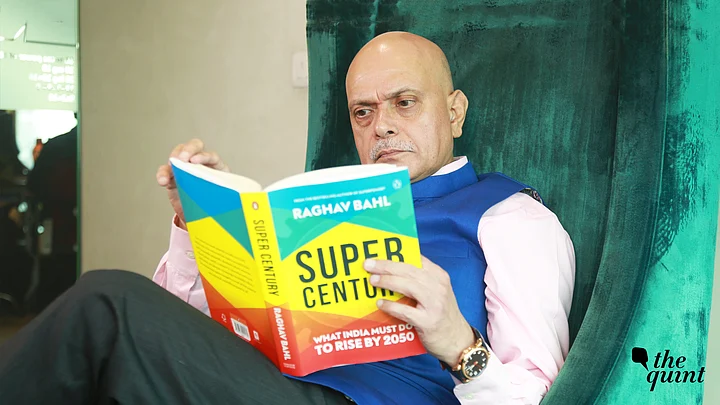What is it about the Indian psyche that makes us so incapable of fulfilling our promise as a nation? Why are we so averse to risk, resigned to mediocrity and mired in a collective lack of confidence? India has so much potential but seems forever stuck on the brink of actualisation, unable to muster the political will and geo-economic force to clear the final bar. The stakes are higher than ever, and India's moment is now.
But where should we turn first — to our troubles at home, or to the global challenges of terrorism, tyranny, ethnic conflict, mass migration, civil war and climate change? In Super Century, Raghav Bahl offers a cogent and candid assessment of how we got where we are and a clear blueprint of what we need to do, both at home and in the world, to fulfil our promise of going forward.
Here’s the excerpt from the book!
India’s economic renaissance can begin only when we honestly answer one question: Why are Indians poor? If we look at the economic history of rich and powerful nations, we see that they share three fundamental conditions: they have created a large ‘surplus’ from one or more resources (farms, land, labour, financial services, trade, technology, etc); they have invested that surplus in infrastructure, health and education; and their government encourages innovation and entrepreneurship in its people. Any country that harnesses those three forces will eliminate poverty and become healthy and prosperous. India is a long way from that. In fact, we have failed to meet each of those conditions: we don’t have much economic ‘surplus’ (beyond the services industry, perhaps); whatever we have has been squandered by timid, inefficient or crony exploitation; and the genius of our people has been strangled by red tape.
And what is the underlying source of those failures? The government itself. To fix these ills, we need to completely rethink how — and where — the state should involve itself in running the economy. But before we can assign a new set of parameters, it’s helpful to understand exactly where things went wrong in the first place.
Mixed—Or Mixed Up?
Indians born between 1950 and 1980 grew up believing we invented the ‘mixed economy’. We were fed golden tales about how Indian industry’s commanding heights were mortgaged not to any Seth ji – capitalist – but to the cuddly and altruistic state.
Unbeknownst to most of us, however, the principles of a mixed economy were first articulated by the thinking echelons of Britain’s Labour Party in the 1930s and 1940s. The philosophy, which took root across Europe in the post-war years, was defined as a form of capitalism whereby most industry was privately held, except for a handful of public utilities and essential services provided by the state—including environmental protections, workplace safeguards and welfare. Essentially, a ‘mixed economy’ envisaged a predominantly free-market system operating under government regulations to ensure health, safety, fair competition and social justice.
But in India, perhaps because of the socialist leanings of our founding fathers, government dominance and ownership became the hallmarks of what we called a ‘mixed economy’. In reality, it was a wealth-destroying form of state capitalism, with the government assuming monopolistic control of key sectors: transportation, banking, telecom, hospitality, steel, coal, arms, healthcare and universities. Yet ironically, agriculture – India’s biggest employer – remained totally in private hands, unreformed and chained to outdated methods, operating far outside the mixed economy’s reach. Instead of evolving into an enlightened welfare state, we got trapped in a nowhere economy—neither a well-regulated free market nor a Soviet-style command-and-control structure. Renowned economists have blamed this policy muddle for producing both the slow growth of socialism and the inequalities of capitalism. In short, it was the worst of both worlds. No wonder our 1991 bankruptcy was foretold and inevitable.
Unfortunately, we wasted the crisis of 1991 by failing to straighten out the ‘mixed-up’ economy or resolve its contradictions. Instead, we chose the path of liberalisation. And while I readily concede that those trade, industry and investment reforms were hugely positive – even transformative – unshackling us from the past and unleashing growth impulses, it wasn’t quite the revolutionary change it was made out to be. We only shifted from first gear to second, while the chassis of India’s economic motor remained split, wobbling between private industry and a domineering government.
(At The Quint, we question everything. Play an active role in shaping our journalism by becoming a member today.)
